Ferruccio
Our sixth float, Ferruccio has been deployed in the Indian Ocean
Ferruccio—Golden Coast Academy; San Buenaventura, CA
Location: 45° 50′ 43.8” S; 94° 17′ 10.68” E
Time: Mon 20 MAR 2024 10:09 UTC
Temperature: 10°C, Wind 15 kts W
Float Number: 21848
Float Type: Apex
Float Program: GO-BGC
This float was adopted by Golden Coast Academy in San Buenaventura, CA and named Ferruccio. According to teacher Jonathan Gush, the name was chosen because Ferruccio Lamborghini was the inventor of the Lamborghini and invented new technology to help make engines work better. We decorated Ferruccio in sleek markings befitting the Lamborghini inventor, and even gave it our own spin on the logo! We like to think that Ferruccio Lamborghini would approve of the technology innovations that make these floats work better, so we even gave it his signature of approval!
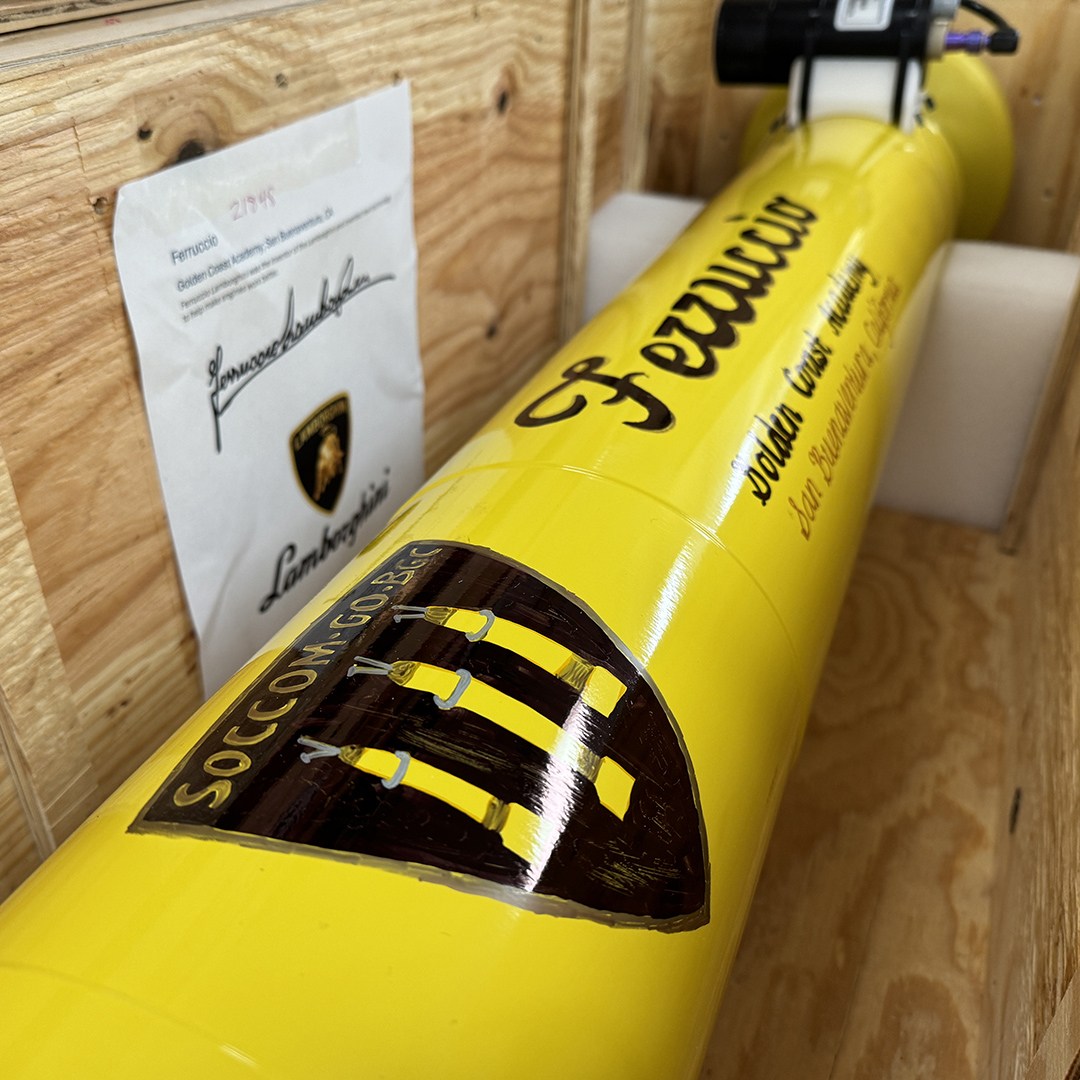
The SOCCOM/GO-BGC logo in the style of Lamborghini (artwork by Jennifer Magnusson)
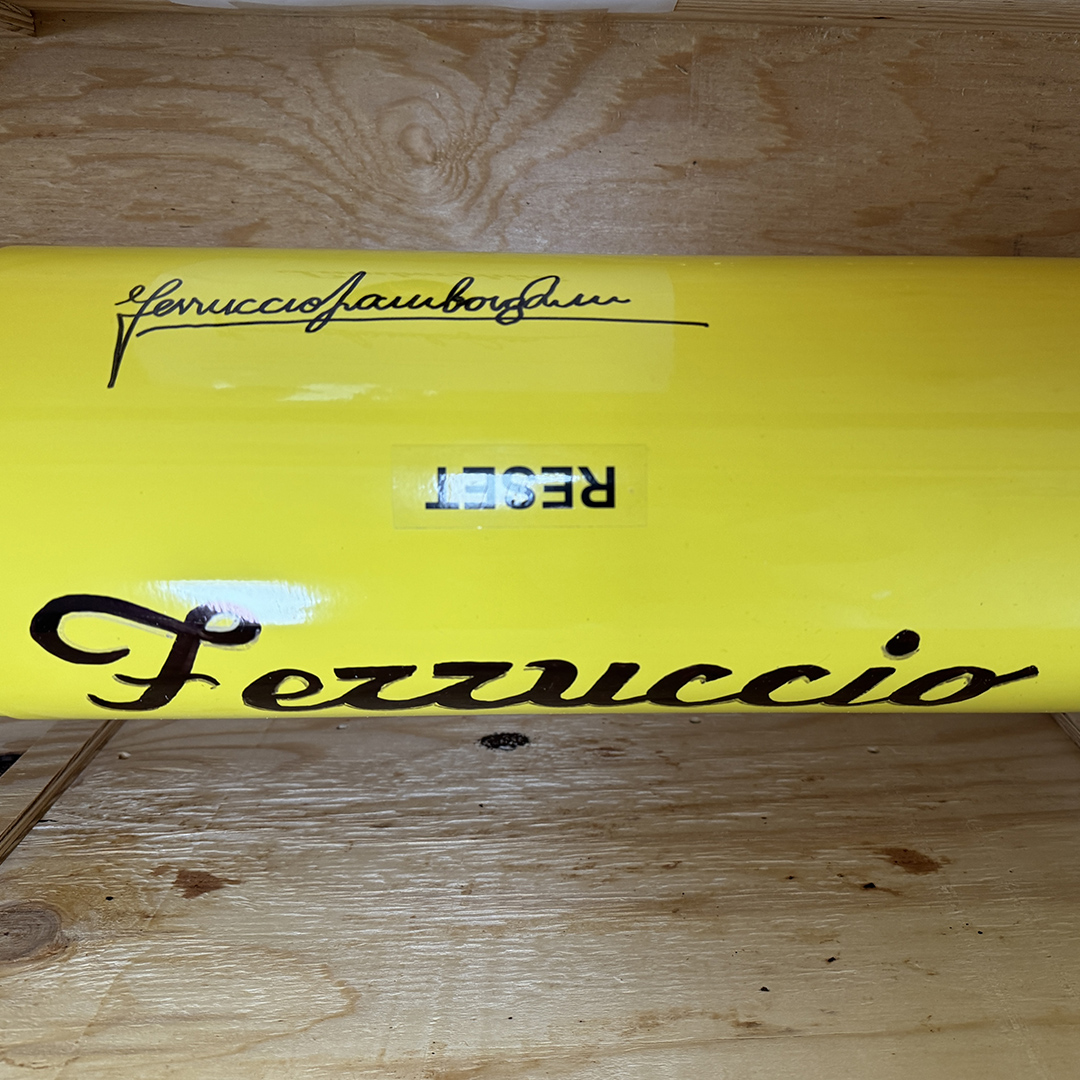
Another iceberg, bright white and beautiful in the sun.
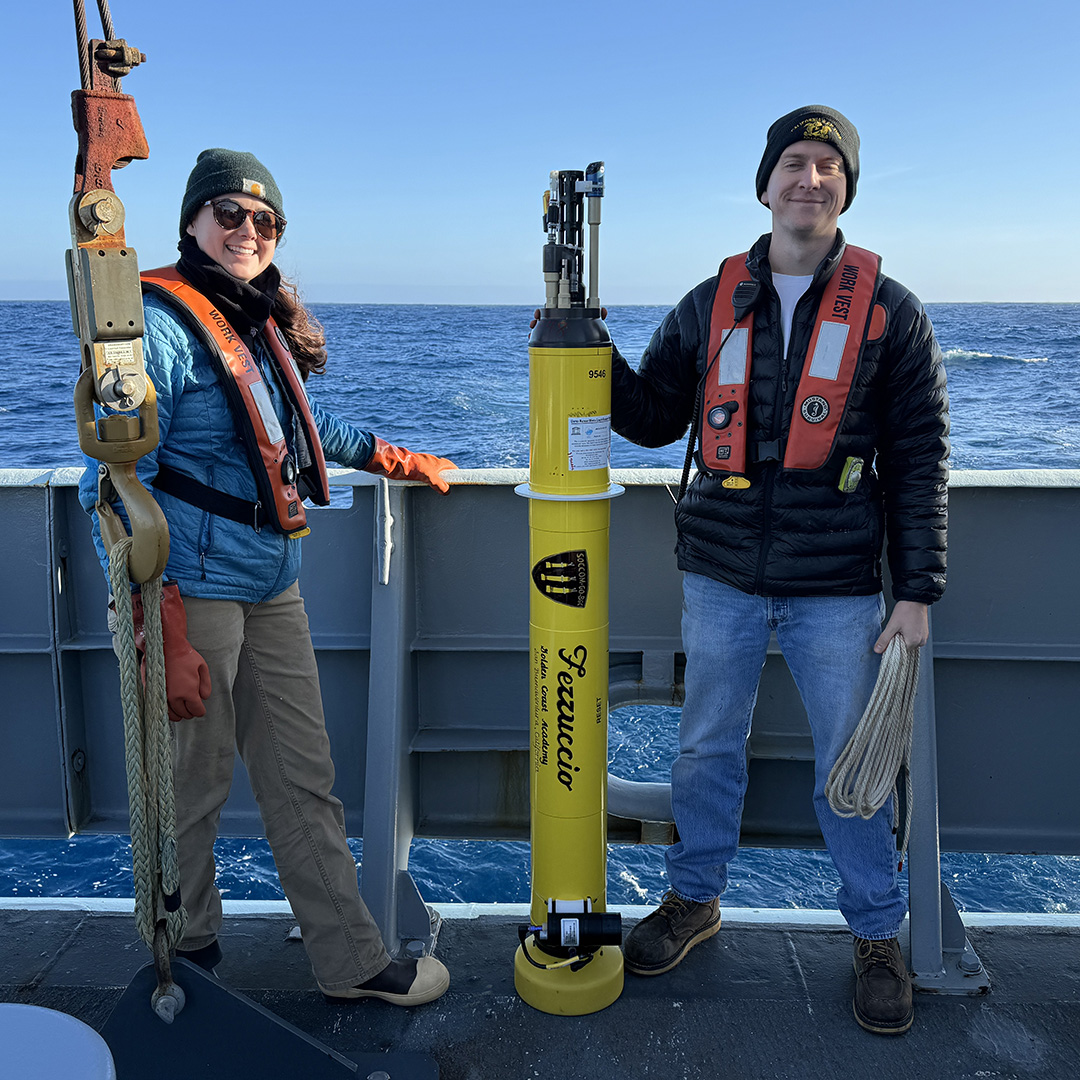
Ferruccio is ready to deploy.
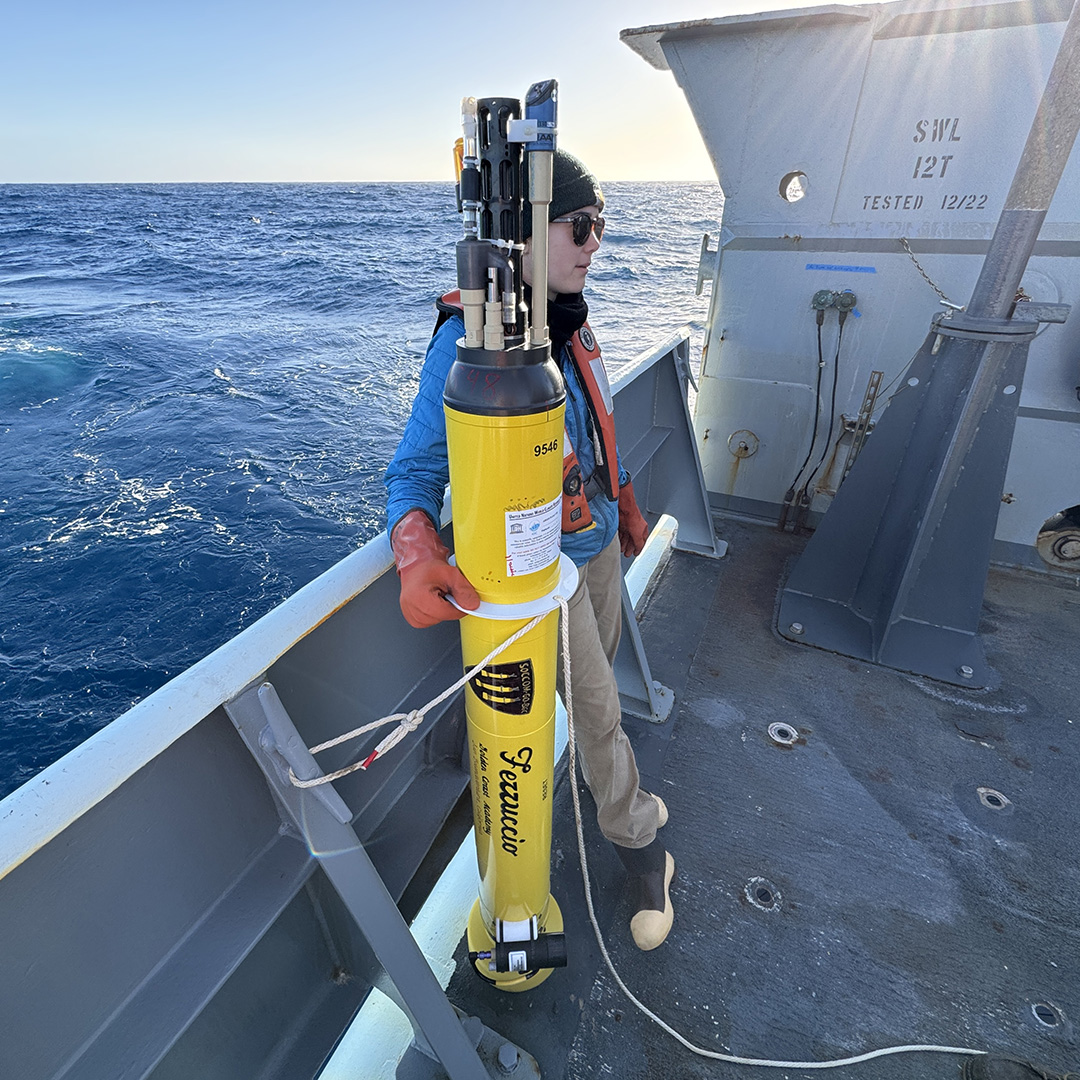
AB Elena Wisecarver waits at the rail with Ferruccio in the sunshine.
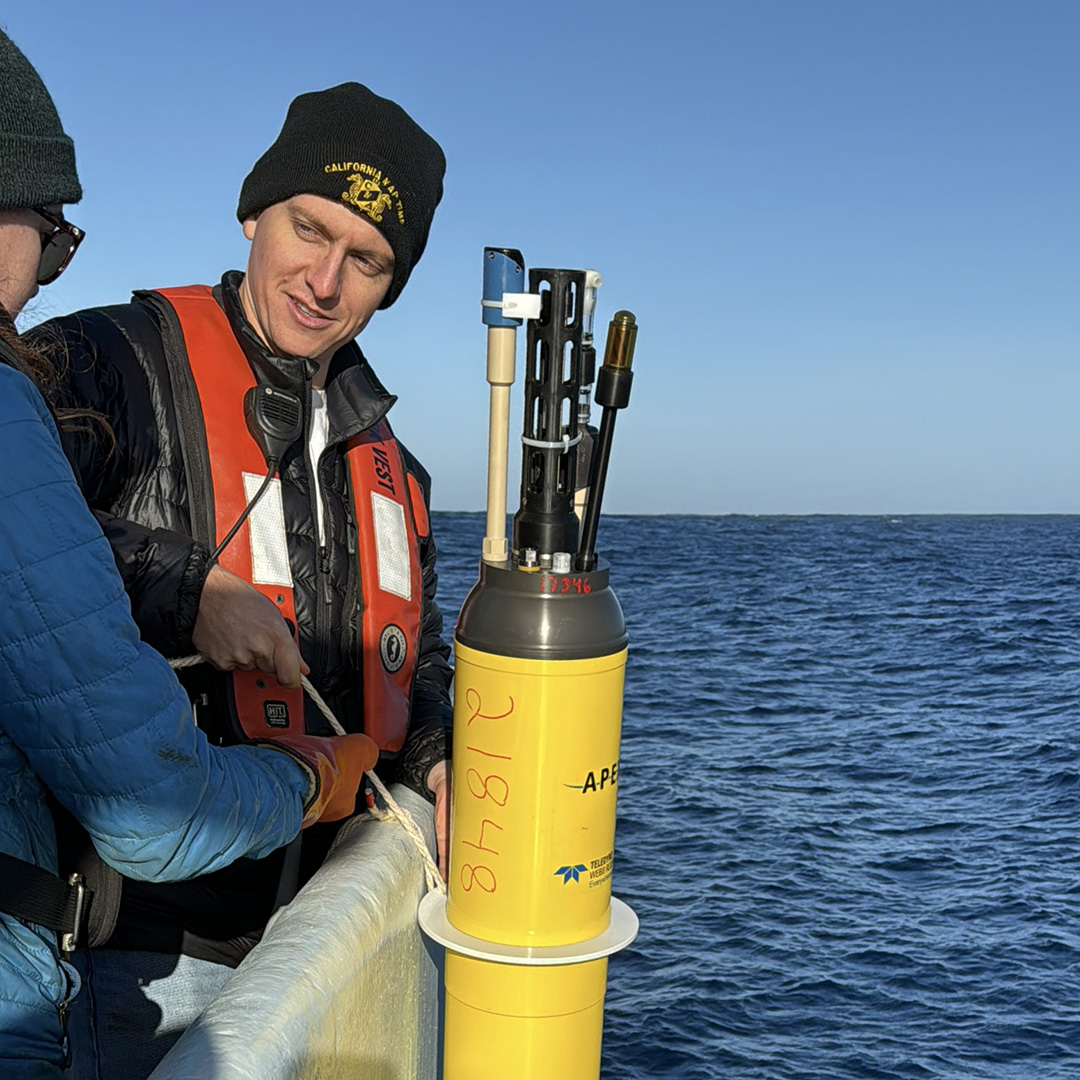
Care must be taken during deployment so that none of the float’s sensors are damaged on the way down.
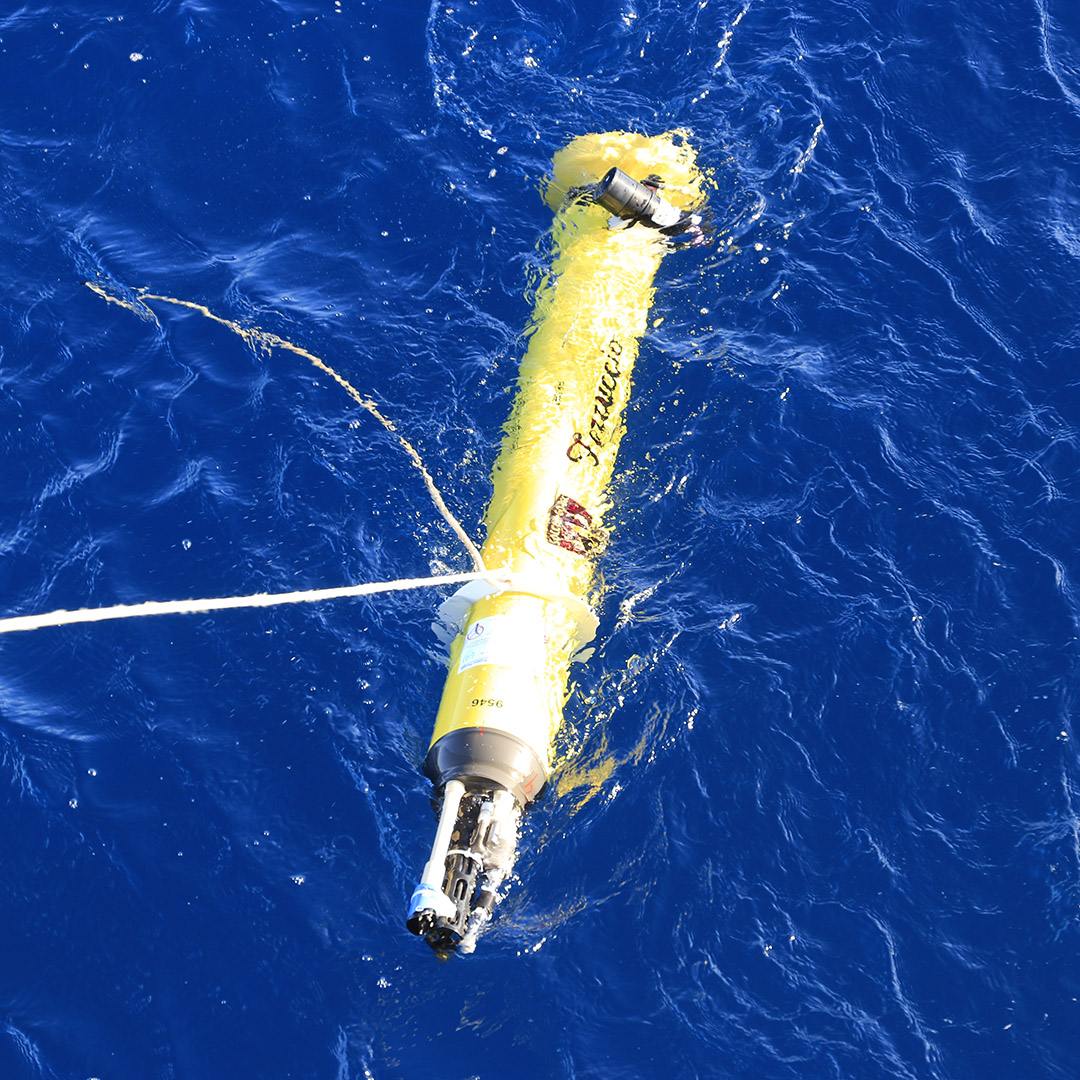
Ferruccio is released into the clear blue of the Indian Ocean.
A biogeochemical float like Ferruccio spends its life drifting through the ocean, changing depth and collecting data at programmed intervals. It is battery-powered and hosts a suite of chemical and optical sensors. A typical cycle for a float is to descend to 1,000 m depth and drift for five to 10 days, then dive to 2,000 m before returning to the surface. It is able to dive and surface by changing its buoyancy, which is accomplished by pumping oil from inside the float to an external bladder and back. It collects data as it ascends, and when it reaches the surface, it transmits the data via Iridium communications satellites. It will repeat this cycle continually for as long as the batteries allow, about five years.
In addition to the information found on the “For Educators” page on the Adopt-a-Float website, you can check out the Float Technology page for more detailed information about the innovative design of these floats, including information on all of the sensors. There is a great animation from the SOCCOM project that shows how biogeochemical floats operate and fit into the global ocean observing system.
